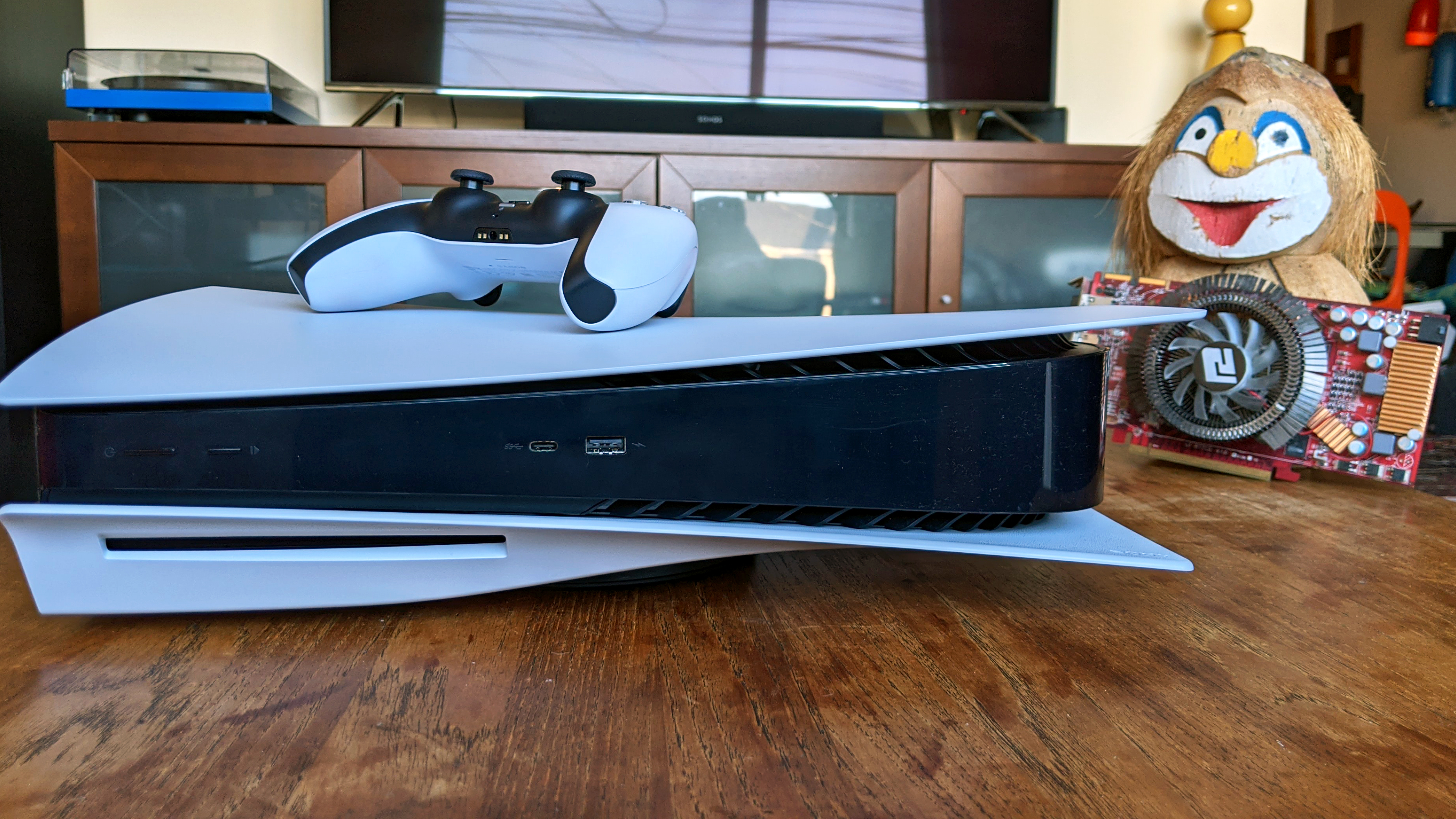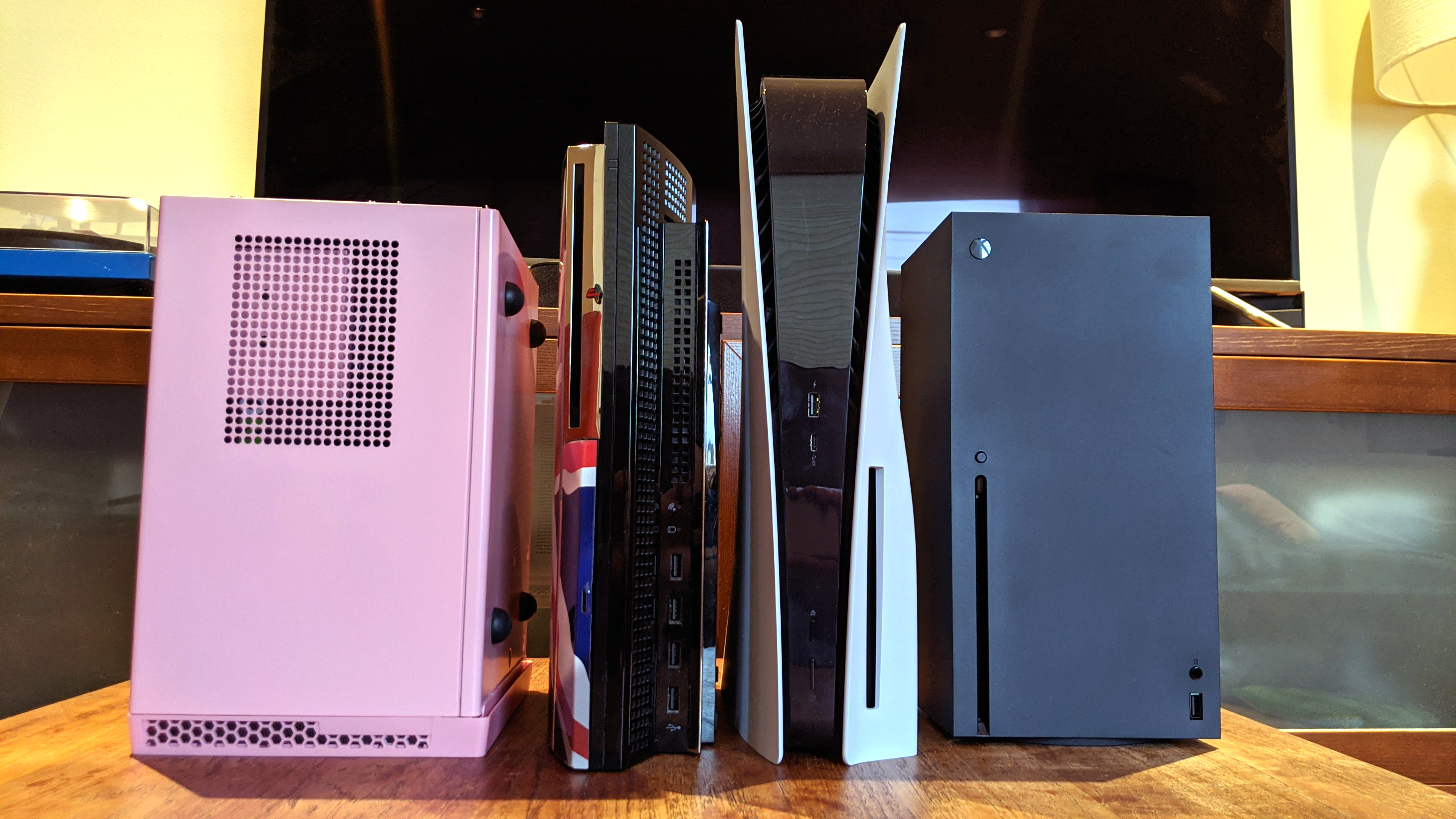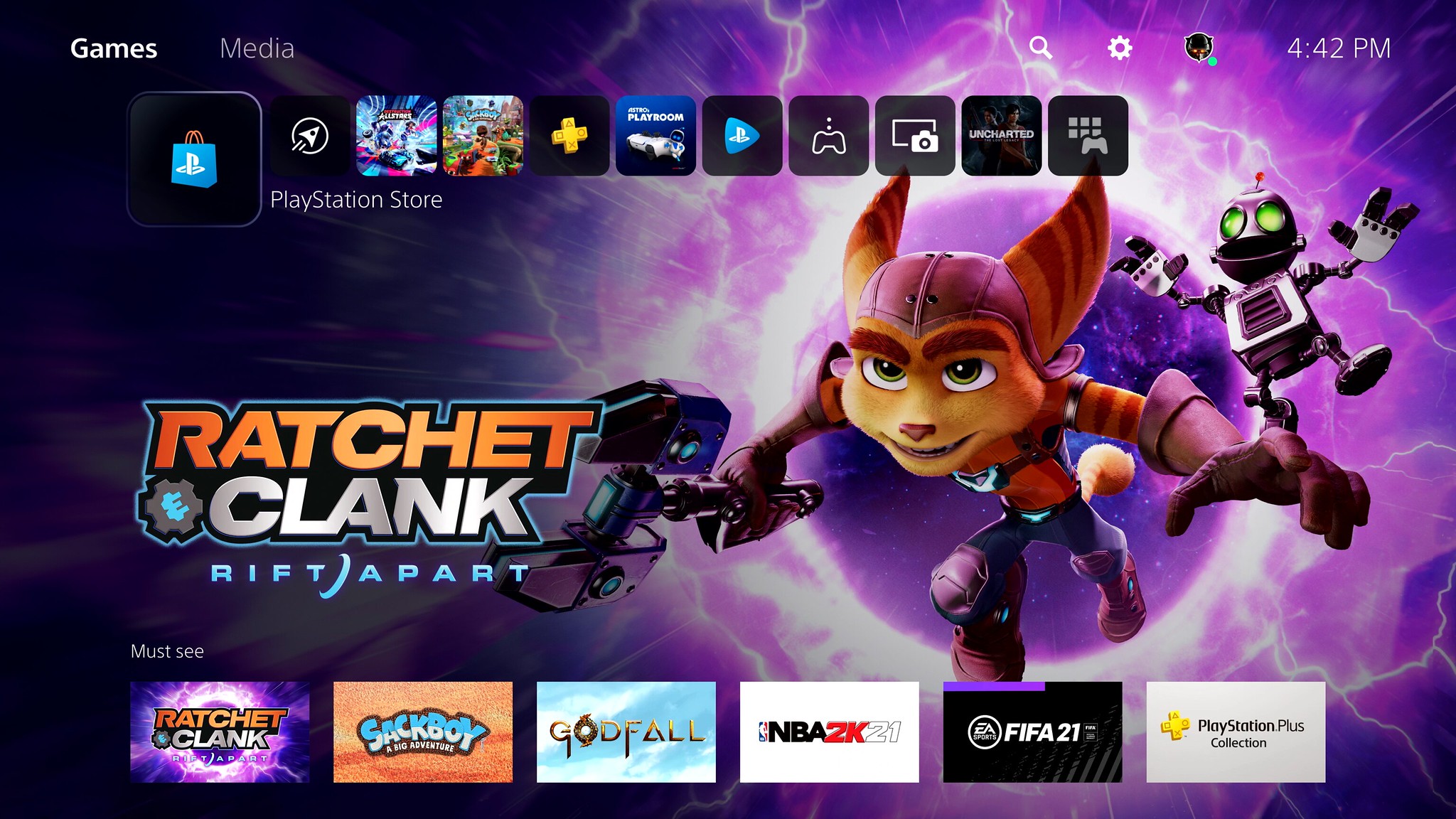PlayStation 5 review: Sony's next-gen console, from a PC gamer's perspective
Is the next-gen PlayStation a worthy companion for a gaming PC?

With Sony releasing the PlayStation 5 today for the rest of the world it's worth taking another look at what makes this next-gen game box tick. And there is indeed a brief moment where the PlayStation 5 truly feels like a next-gen console. This is the "whoa" moment—the proof that this hardware can do something no console before was capable of. For me, the PS5's "whoa" moment is the scant few seconds I have to wait to boot into a game and just start playing, and it's far faster than anything I've ever experienced on PC , let alone a previous Xbox or PlayStation. The PS5's new user interface confidently highlights the incredible speed of its SSD with a "Game Switcher" menu that lets you hop between games in the time it takes to reach for a drink of water.
A new graphics card slotted into your existing PC could outperform the PS5 while offering all the other perks of PC gaming
It's a damn good next-gen "whoa," but it only lasts as long as it takes to boot into a game. And then, at least with the games available on PS5 prior to launch, the wow factor starts to fall away. Spider-Man: Miles Morales is a pretty game, but if you told me it was running on a PS4 Pro, I'd believe you. It supports ray tracing, but I'd have to stare at a side-by-side comparison to tell the difference. Sony's big-budget exclusive PS4 games still look great, but none of them are suddenly running at 120 fps. Avid PC gamers can already run many games in the PlayStation library at higher settings on their current PCs, without spending $400 or more on a new console.
So why would you buy a PlayStation 5 as a PC gamer? After spending a week playing around with the new console, which Sony provided for review, I think that decision comes down to three key elements: the SSD, the new DualSense controller, and Sony's arsenal of exclusive games.
The Specs

PlayStation 5: The Specs
The PlayStation 5 is a truly gigantic console. It's bigger than the curved cinderblock that was the PlayStation 3, and it makes Microsoft's engineering on the Xbox Series X look especially impressive when the two are placed side-by-side. Especially since, when you look at the specs, they're very similar systems.
Here's what the PlayStation 5 is packing:
- CPU: 8 cores @ 3.5GHz (variable frequency), custom Zen 2
- GPU: 36 CUs @ 2.23GHz (variable), 10.28 TFLOPs, custom RDNA 2
- Memory: 16GB GDDR5 w/ 256-bit bus
- Memory bandwidth: 448GB/s
- Storage: 825GB SSD
- I/O throughput: 5.5GB/s (raw), 8-9GB/s (compressed)
- Expandable storage: NVMe SSD slot
- External storage: USB HDD support
- Optical drive: 4K UHD Blu-ray
The PS5 and new Xbox both run on a custom AMD system-on-a-chip combining a Zen 2 CPU core and an RDNA 2 GPU, which is at the heart of the soon-to-be-released RX 6000 graphics cards. The CPU in Microsoft's new console runs at a slightly higher clock speed, and its GPU has significantly more compute units—52 to the PS5's 36. But the PlayStation 5's GPU is actually clocked faster. We can sit here and scrutinize the teraflop power of each system all day, but with such similar underlying hardware, it's likely going to take months or even years to see if either has a real, tangible advantage in performance.
The more significant metric for PC gamers is: How does a PS5 stack up to a PC you can build right now, or the one you already own? AMD's Ryzen 5000 CPUs using the Zen 3 architecture, releasing this month, are already a generation newer and faster than what's in these consoles. The newly announced RX 6800 XT, meanwhile, has double the CUs as the PlayStation 5 at the same boost clock speed (though at a steep price of $650 all by itself).
Keep up to date with the most important stories and the best deals, as picked by the PC Gamer team.
The PS5 packs a hell of a punch for $400, more than a gaming PC at that price could match today. But high-end graphics cards and CPUs already outperform it today, and PC parts will only get faster and cheaper over the course of its life. Still, as an entry point into ray tracing and 4K gaming, it's an exciting piece of hardware—if you don't already own a PC built in the last five years.
Once you own a PC, the deal isn't so compelling. A new graphics card slotted into your existing PC could outperform the PS5 while offering all the other perks of PC gaming. Steam sales and free game giveaways on PC could easily make up for the cost of a higher-end graphics card in just a few months. The PS5 has a few special new tricks up its sleeve, but none that convince me it would become my go-to platform for playing new games.
Big features: UI and SSD
The big features: New UI and super-fast loading
The PS5's interface mostly gets out of your way to let you boot games quickly
The Road Runner at the heart of the PS5, its fancy custom SSD, drives the focus of this console. Sony wants you to be able to play games almost instantly, and the technology delivers on that vision. It's great—the kind of improvement that makes you sound especially spoiled when you go back to your expensive computer and say ugh, I have to wait 15 seconds for this game to load? If you've only played games from a hard drive, the speed of this thing might make you spontaneously burst into tears.
The PS5's interface mostly gets out of your way to let you boot games quickly, without digging into too many menus. The user interface feels like a natural refinement of the PlayStation 4's, which was itself not too different from the PlayStation 3's. The throughline is obvious (unlike the modern Xbox UI, which looks like it's from an altogether different planet than the 'Blades' interface that launched on the Xbox 360 in 2005. We were all so innocent, once).
One nice addition is the new guide menu that pops up when you tap the PlayStation button on the controller. It gives you quick access to pretty much everything you'll use day-to-day: the launcher showing your recently played games, your downloads, friends list, notifications and network settings, etc.
You can also customize what shows up on this menu to put your priority system features close at hand. This pop-up menu packs in so much functionality, there's actually not much to see on the home screen. Highlight the store or "Explore" icons to see news and videos about upcoming games, or highlight an individual game to see recent achievements and your video capture and so on. I prefer the minimalist approach here to the more cluttered Xbox interface, and it feels built to highlight how quickly and easily you can jump right into a game thanks to the SSD. Some games, like Sony's pack-in Astro's Playroom, actually let you highlight certain levels or challenges (say, a particular time trial) and boot straight into it from the main menu.
It's a jarring feature. I can see the appeal for arcadey games or platformers, where I want to boot up a particular level to play without launching the game and digging through layers of menus. It's convenient. But it's not such a good fit for other types of games. The quick launch feature is also built into Spider-Man: Miles Morales, a sprawling open world game where swinging around New York to get from mission-to-mission is a key part of the design. I don't love the idea of a system-level menu letting me jump to a specific mission where I rescue a stray cat, robbing it of the context of where it is on the map or any of the decisions I normally would've made around taking on that mission.
You could simply argue "don't use it if you don't like it," but game developers have to keep in mind that many, many players will always optimize for the path of least resistance, even if that path is less fun or less interesting. It's a compulsive part of the hobby. Fast travel systems in open world games already encourage players to skip over the act of exploration as filler or wasted time between missions, when in well-designed games, the moments between hand-crafted missions can be the most memorable and surprising. That downtime has purpose.
A system-level fast travel system feels like a step towards treating individual parts of games as nothing but "content" to complete, a task on a checklist rather than a part of an organic whole. I hope developers think carefully about how they implement it into their games.
I also hope developers think carefully about how they take advantage of Sony's new DualSense controller—because it's genuinely fantastic.
Big features: DualSense
The big features: The DualSense controller
If you've heard talk of the DualSense's haptic motors, believe the hype. Nintendo launched the Switch with talk about HD Rumble, but the DualSense does a far better job of executing on that idea. It's nuanced enough to convey the feeling of footsteps on different surfaces and to send pulses through the controller that convey movement.
Astro's Playroom is the showcase game for this, and it really hammers you over the head with everything the DualSense can do. I think it actually overuses the haptics to make a big, bold first impression, but it worked to convince me of how effective the rumble can be. A key part of the trick is using the speaker in the DualSense controller to reinforce the sensation you're having. In Astro's Playroom it plays a little crunchy patter as you walk through snow, then a sharper sound as you skate along a block of ice. When the haptics change alongside those sounds, it really amplifies the immersion.
I was actually more convinced by the use of haptics in Spider-Man: Miles Morales, like when it sent some small, pinpoint pulses through the controller as he typed away on a keyboard. It's a great effect. But I think the DualSense's adaptive triggers will be an even bigger deal for games. They can add a surprising amount of resistance to a trigger pull, and I think developers will find a lot of ways to use them that simply make the act of controlling a game more satisfying. (The morbid but apt question here, as discussed on the Giant Bombcast, is whether the triggers will "revolutionize how it feels to break necks in videogames." I'm guessing yes.) At the very least, we're due for a return of #YearoftheBow.
While I prefer the overall shape of the new Xbox controller in my hand, especially its analog sticks and D-pad, it feels like a polished version of a controller I've been using for 15 years; the DualSense feels like something truly new. I wouldn't buy a console just to use it, but I really hope Sony releases a PC driver so cross-platform games can use the controller's features on PC, too.
The games
The games: Coming soon
The two games I expect to really show off the PS5's hardware muscle, Demon's Souls and Ratchet & Clank: Rift Apart, aren't available to play right now. Demon's Souls isn't available until launch day, while Ratchet is "launch window." Spider-Man: Miles Morales is a good looking game, and runs very well at 4K, 30 fps with ray tracing. But it isn't substantially, noticeably better-looking than a PS4 game, to me, especially when it comes to the character models in cutscenes and their animations (outside Spider-Man's wonderfully fluid movements).
I spent most of my week with the PlayStation 5 playing PlayStation 4 games. Most of Sony's first-party heavy hitters are now free if you subscribe to PlayStation Plus for $5 per month, which is a great deal if you haven't played God of War and Uncharted 4 and many others.
Playing older games on a PlayStation 5 makes it hard for this to feel like a next-gen launch, because the next-gen pickings are so slim. And so far, Sony has announced very few PS5 enhancement patches to improve performance or resolution, unlike Microsoft's more expansive backwards compatibility work. But Sony's first-party library is still far and away the best argument for buying this new console. Until Sony starts releasing more games on PC like Horizon Zero Dawn, some of the most lavishly produced videogames of each year will only be playable on this console.
Performance
PlayStation 5 performance
The last games released in a console's life cycle always draw more power out of it than we could've imagined possible at the beginning. And with so few new, cutting-edge games to test now before launch, I can't say anything insightful about the PS5's performance vs. a gaming PC. We'll know more in the coming weeks, with games like Assassin's Creed: Valhalla giving us more opportunity for comparison.
But let me reiterate: The boot speeds are fast. While there's about 30 seconds of logo preamble before this, here's how quickly Miles Morales gets from main menu to in-game:
The UI is clean, effective, and very fast, and I didn't run into any real bugs or issues in my time using the console. I did try to use the quick launcher to jump straight into a couple missions in Miles Morales from the main menu, and ended up staring at a black screen, the game failing to load. But the system didn't freeze—I could instantly go back to the menu, and booting the game first solved that problem. It was a minor quirk; overall, the software here feels more stable than I'd expect pre-release.
The PS5's size does seem to pay off in a remarkably quiet system. While running through a combat sequence in Miles Morales, I had to put my ear right up to the console to hear it running. Future games may cause the fan to rev up more, but inside an entertainment center I don't think the PlayStation 5 will be audible for most users. This is a real nitpick, but when I put my ear up to the console, I found the sound of the fan a bit clicky. In normal use you may never really hear it, making the sound profile irrelevant, but it reminded me that volume isn't the only factor in how pleasant or unpleasant a fan sounds.
There is one big oversight that's disappointing for PC gamers, though, and that's the PS5's video options. The PS5 doesn't support 1440p output. I've written about this more in-depth here, but when I plugged it into my 2560x1440, 144Hz monitor, it defaulted to 1080p60. The Xbox One X supported 1440p at 120Hz in 2018; there's simply no good reason for a piece of high-end hardware to skip it in 2020. That resolution might not matter much in the living room, but for millions of PC gamers with high-end monitors, the PS5 is lagging years behind in basic resolution support.
The verdict
The PlayStation 5 verdict for PC gamers
If you already own a powerful gaming PC, you'll soon be able to replicate the PS5's one real tech advantage, its SSD, with a new NVMe model like the Samsung 980 Pro. If you don't have a ray tracing-capable PC and dream of those real-time reflections at an affordable price, though, the $400 digital console is a tempting offer—until you start thinking about how much cheaper buying games on PC can be, or the fact that Microsoft's Game Pass subscription has more than 100 games across PC and console.
Sony just can't compete with that, so the ultimate draw remains its big exclusives. If you want more God of War, more Spider-Man, and whatever Naughty Dog does next, this is the console to get. If you can wait for Sony to get around to bringing more of its first party games to PC, try not to get shiny new toy envy—the PS5 will stay the same for years, while PC hardware's only going to keep getting better and better.

Wes has been covering games and hardware for more than 10 years, first at tech sites like The Wirecutter and Tested before joining the PC Gamer team in 2014. Wes plays a little bit of everything, but he'll always jump at the chance to cover emulation and Japanese games.
When he's not obsessively optimizing and re-optimizing a tangle of conveyor belts in Satisfactory (it's really becoming a problem), he's probably playing a 20-year-old Final Fantasy or some opaque ASCII roguelike. With a focus on writing and editing features, he seeks out personal stories and in-depth histories from the corners of PC gaming and its niche communities. 50% pizza by volume (deep dish, to be specific).






